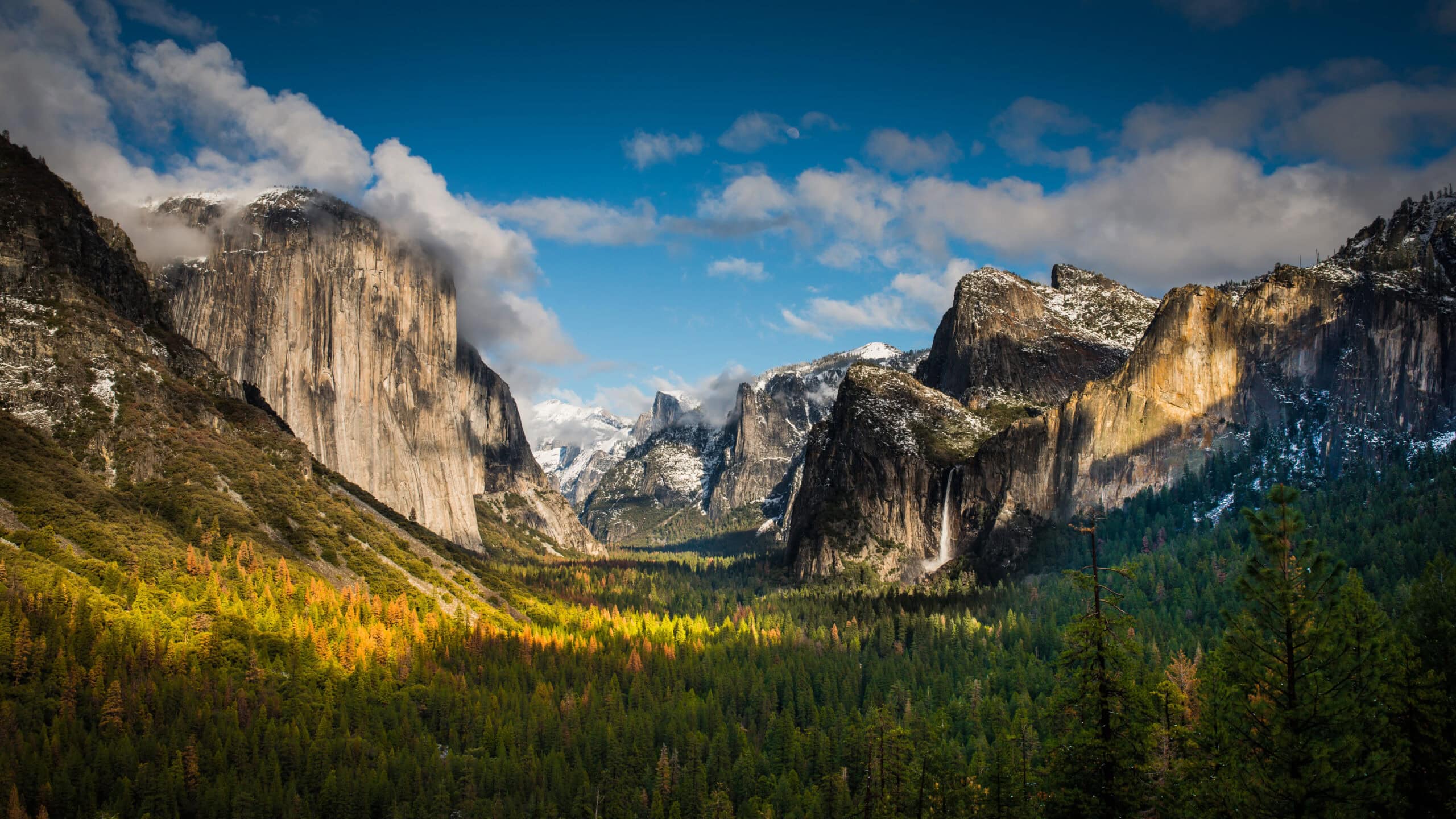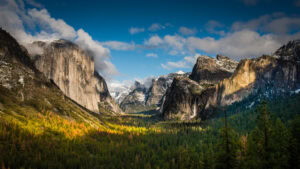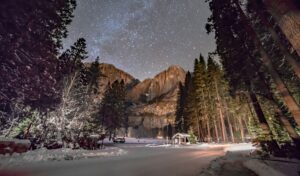Across the globe there are indeed some impressive gates. Some are known for their architecture, while others are entryways to what’s beyond. San Francisco’s Golden Gate comes to mind, or the Gateway Arch in St. Louis. Across the pond we have the Brandenburg Gate in Berlin, and for a historic portal to ancient Rome, it’s hard to beat the famed Arch of Constantine. Heck, why stop there? The Pearly Gates are nothing to shake a stick at.
But when it comes to heaven on earth, nothing quite compares to what lay behind the gates of Yosemite National Park. Massive granite domes, two-thousand-foot waterfalls, and groves of Giant Sequoias are just a few of the unforgettable attractions that are sure to impress. And with a geographic area that covers nearly 1,200 square miles, just one gate ain’t gonna cut it. Here is our guide to the five gates of Yosemite, and how to best enjoy the natural splendor that surrounds them.
Yosemite’s Arch Rock Entrance

Entering Yosemite’s western Arch Rock Entrance is like a running back taking the most direct path through the defense — straight up the gut. But don’t let such an indelicate football reference fool you. The terrain is stunning, and the activities are without a doubt first-string.
Sitting at an elevation of 2,100 ft, the Arch Rock Entrance is reached via All-Season Highway 140 as it rises through the dramatic walls of the Merced River Canyon. As the name implies, this approach translates to easier winter travel due to its lower elevation. The rugged beauty of Highway 140 is also easier to navigate for RVs, making van life a smooth ride.
Here, visitors will be greeted by a Park ranger where you’ll pay your entrance fee and receive a map/guide. If you want to reduce your paper profile then download the identical handouts by visiting the Yosemite National Park map page, or get the latest calendar of events by downloading the frequently-updated Yosemite Guide.
Things To Do
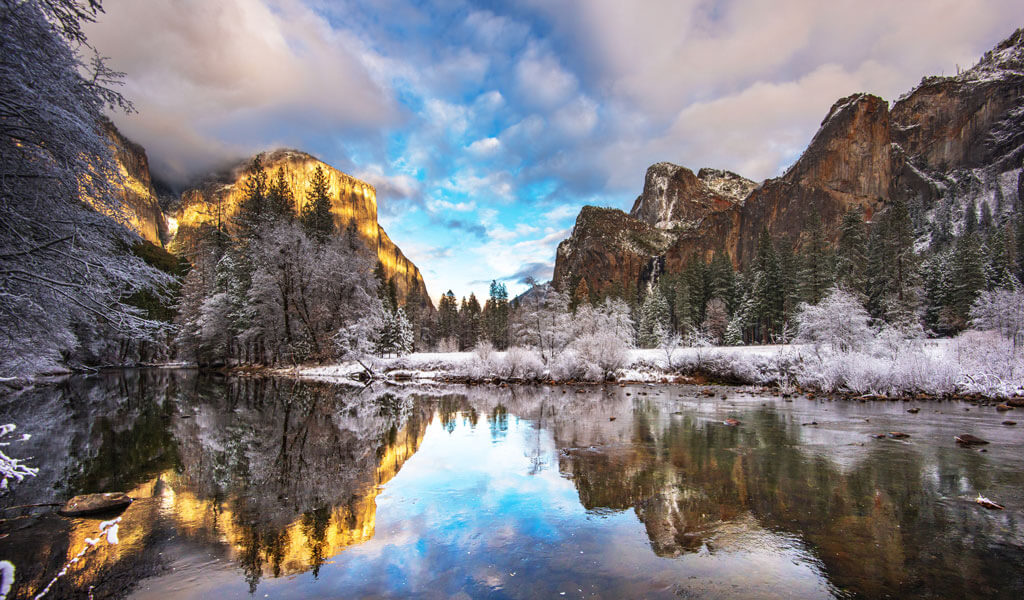
The Arch Rock Entrance boasts one simple advantage: it’s the closest to Yosemite Valley. After just 7 miles you’ve reached the Valley’s western end and its first iconic attraction, Bridalveil Fall. The parade of natural wonders continue to reveal themselves one after another, from the vertical monolith of El Capitan to the glassy charms of Mirror Lake and the Herculean curve of Half Dome. There may not be souvenirs at the Arch Rock Entrance, but you’ll have plenty of opportunities to peruse the Park’s biggest selection of offerings in Yosemite Village, not to mention pick up any supplies.
Springtime is a magical experience along Highway 140 as it leads you to the Arch Rock Entrance. The Merced River gushes with snowmelt, tempting visitors with an unforgettable whitewater rafting trip, and the spring wildflowers make lively hiking partners along the Hite Cove Trail. Riverside picnics along the Merced round out the festivities, as the rushing water provides a meditative backdrop and the warm California sun makes the bubbles in your Sierra cup sparkle all the brighter.
Nearby Lodging
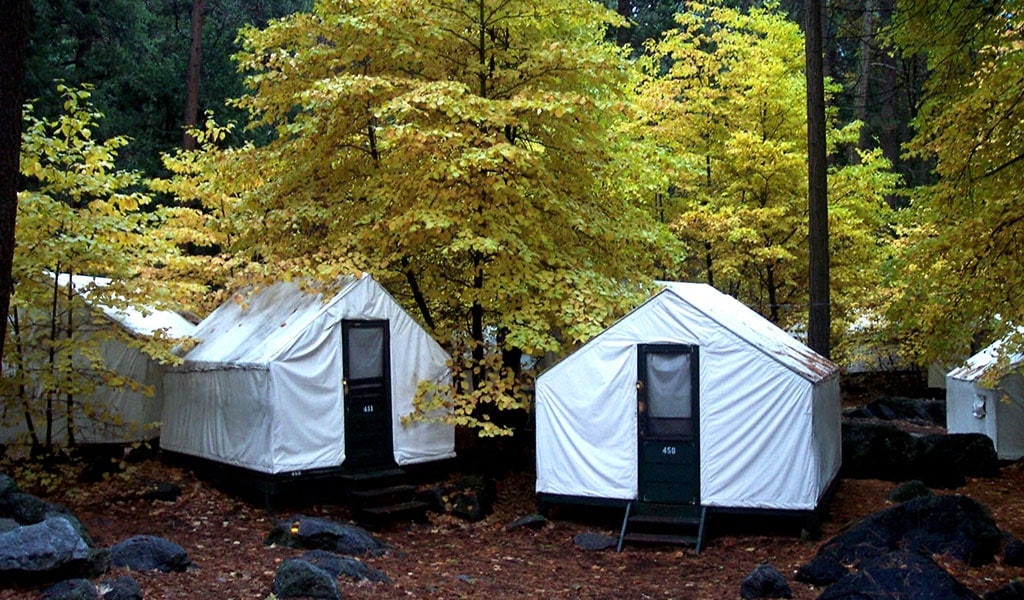
Lodging in Yosemite Valley is indeed an unforgettable experience whether that’s the famed Ahwahnee Hotel, one of its four campgrounds or a tent-cabin in Curry Village. Yet with great acclaim comes great demand. If you can secure these popular lodgings that’s a win. If booking proves a challenge — or you’d rather have the broader range of amenities that come with staying outside the Park — then fear not. There’s an alternative!
The 32-mile stretch of Highway 140 through Central Mariposa County (from the town of Mariposa to the Arch Rock Entrance) has much to offer. A charming Gold Rush burg with a range of accommodations from hotels and campgrounds to vacation rentals? Check. Friendly digs with a health spa kicker such as the Yosemite Bug Rustic Mountain Resort in Midpines? Noted. How about staying just 2.5 miles from the Arch Rock Entrance with a balcony that overlooks the Merced River? The Yosemite View Lodge awaits. Check out the full complement of lodging near the Arch Rock Entrance — there’s a comfort level and price point for every traveler.
Yosemite’s Big Oak Flat Entrance
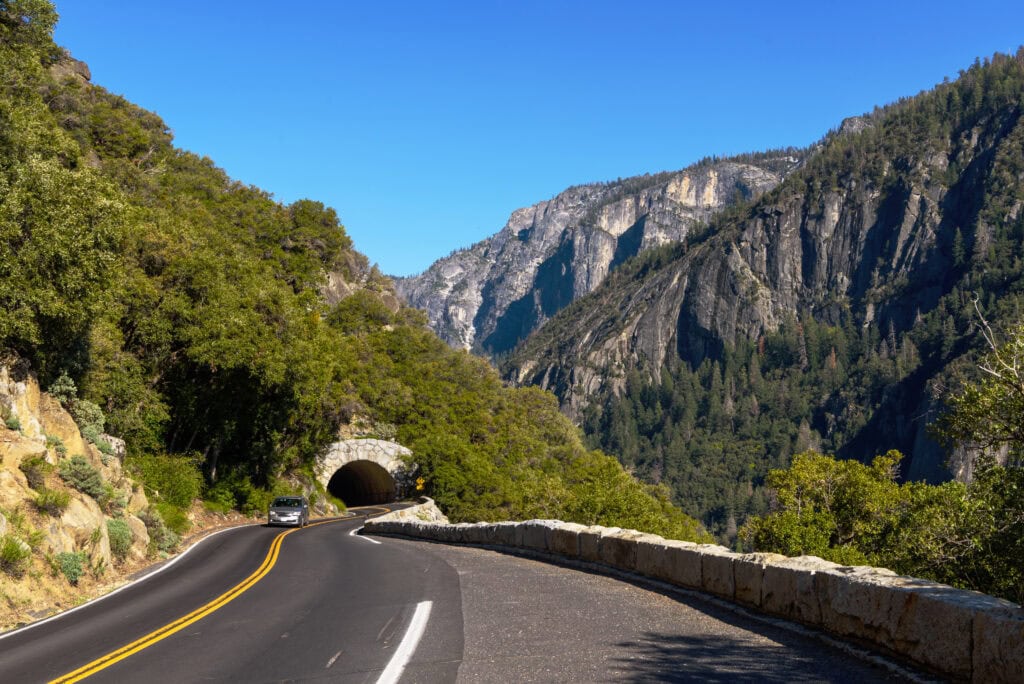
Situated at 4,800 ft along the northwest boundary of Yosemite National Park, the Big Oak Flat Entrance welcomes visitors via Highway 120/Big Oak Flat Road. The roadclimbs through pine forests on gently winding roads to reach Crane Flat (6,200 ft), before descending into Yosemite Valley. This 19-mile drive is a bit farther, but there are plenty of options along the way to stop and enjoy the ultimate Sierra experience.
The Big Oak Flat Information Center just beyond the gate is where Park rangers are at-the-ready to answer questions and backpackers can pick up their Wilderness Permits. There are a handful of books/souvenirs available — not to mention bathrooms — making it a worthy pit stop for stretching legs.
Things To Do
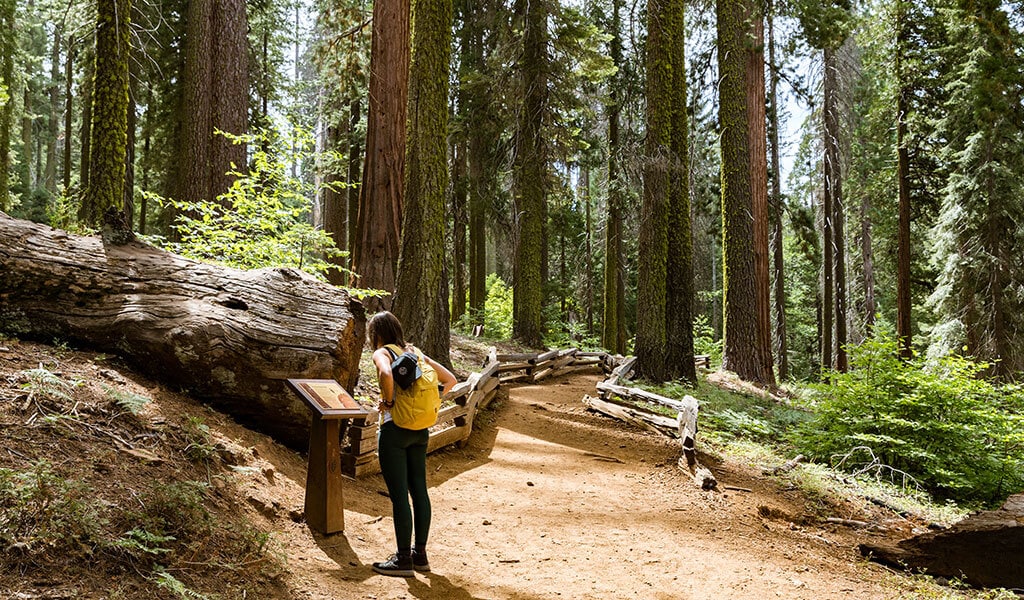
In addition to the pleasing wilderness that surrounds, the drive from the Big Oak Flat Entrance to Yosemite Valley offers visitors the unique opportunity to grove-hop. The Merced Grove of Giant Sequoias and nearby Tuolumne Grove are complete masterworks of ancient trees where the lung-filling freshness infuses their massive boughs. Walking through these giants invigorates, while the informational placards educate. Forest for the trees, indeed.
Before reaching Yosemite Valley, the turnout to Foresta is another intriguing dogleg off the main fairway that is Highway 120. One of three communities of private property located within Yosemite National Park, the cabins are quaint, and visitors are often surprised that they can see a distant Half Dome peeking through the trees. Foresta Falls is an easy two-mile hike (out & back) along a dirt fire road, and the historic McCauley & Meyer Barns still stand as enduring reminders of Yosemite’s early pioneers.
Nearby Lodging
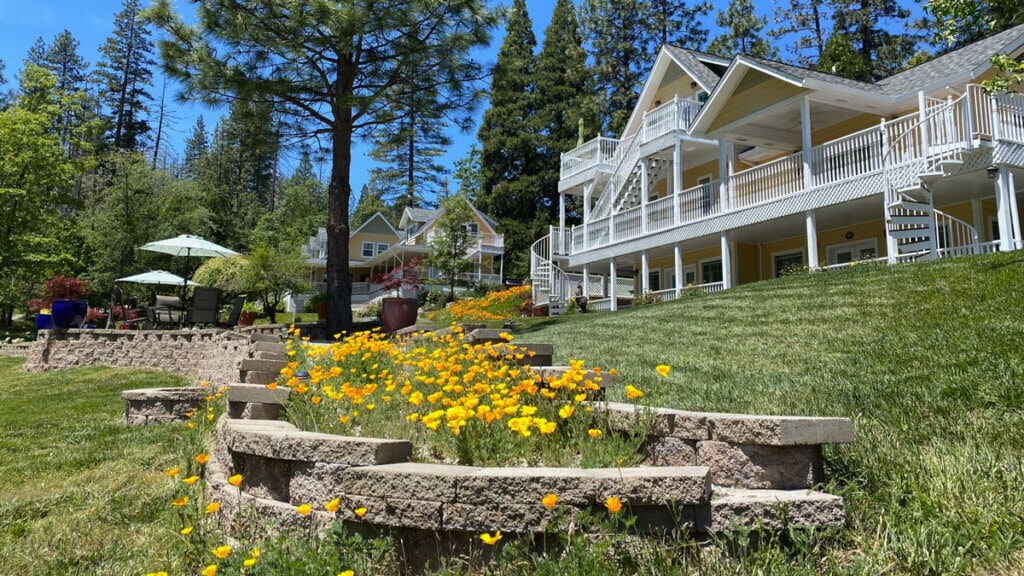
The nearest Yosemite campgrounds inside the Big Oak Flat Entrance are Hodgdon Meadow (4,900 ft/105 sites), Crane Flat (6,200 ft/162 sites) and Tamarack Flat (6,300 ft/52 sites). Like all campgrounds inside the Park, peak and shoulder seasons book up early so be sure to plan ahead. Hodgdon Meadow is the only campground of the three that is open year-round, while Tamarack Flat is tent-only (no RVs).
Foresta offers over a dozen vacation rentals that are just 10 miles from Yosemite Valley, but with that convenience and rustic charm comes popularity. Book well in advance to enjoy this oft-overlooked community of historical importance.
A worthy alternative is lodging outside the Park in nearby Northern Mariposa County. This quiet region is dominated by the Stanislaus National Forest and features an interesting array of accommodations that ranges from bed & breakfasts such as the Yosemite Blackberry Inn to hotels such as the Yosemite Westgate Lodge, and from vacation rentals like the Big Table Ranch to the fun & funky Vacation Station Boxcar & Caboose.
Yosemite’s Hetch Hetchy Entrance

Yosemite’s Hetch Hetchy Entrance is a bit of an enigma. The gate — which leads to Hetch Hetchy Reservoir — is along an out & back road in a somewhat remote corner of Northern Yosemite. There is no boating or swimming allowed, and there are no overnight stays. And yet…making that turnoff from Highway 120 will lead visitors to one of Yosemite’s most beautiful — and unsung — destinations! Entrance fees/wilderness permits can be picked up here, and dollars to donuts you’ll be saying Hetch Hetchy over and over again on the drive for the simple reason that it’s just fun to say.
Things To Do
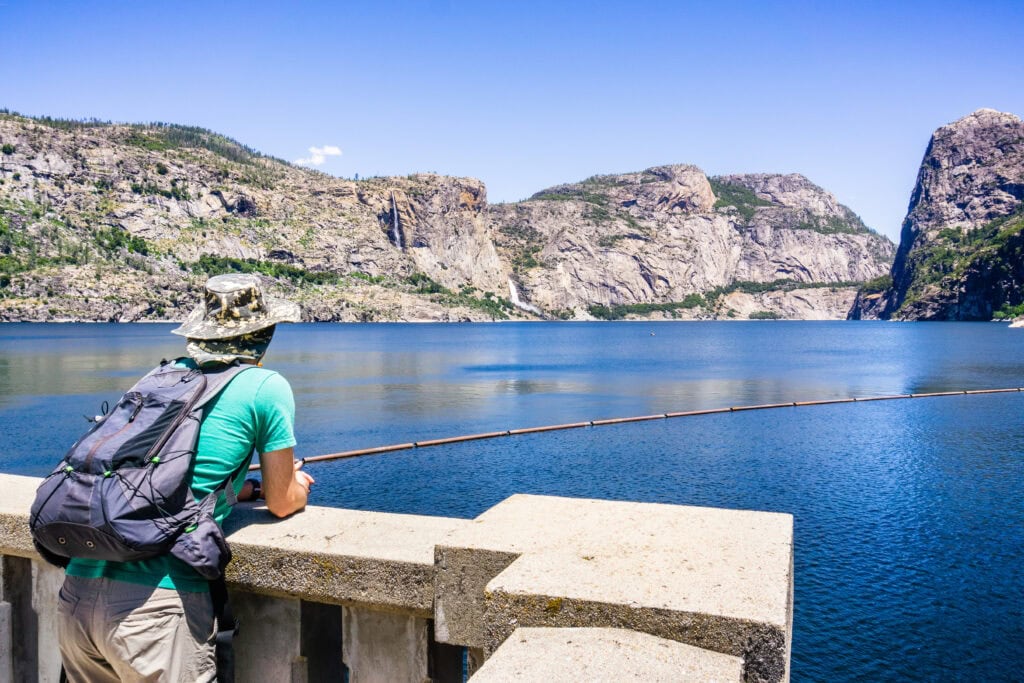
Fed by the Tuolumne River, Hetch Hetchy Reservoir is a sparkling bowl of Sierra snowmelt tucked against weather-washed granite cliffs as dramatic as those in Yosemite Valley. Wapama Fall is a brisk five-mile out & back hike with little elevation gain and a bonus — towering Kolana Rock keeping watch from across the breeze-rippled water. If you come in spring, you’ll likely see seasonal Tueeulula Falls on your way as it sheets down the cliff face, or if you want to go the distance then Rancheria Falls is a calf-stretching 13.4 miles out & back.
Taking a stroll on O’Shaughnessy Dam and reading the informational placards is another way to enjoy Hetch Hetchy. Gazing down the rugged plunge of the Tuolumne River Canyon below can inspire both awe and vertigo. It’s hard to snap a bad photo from this perch, and the rock tunnel at the far end of the dam is a fun place for silhouette shots to complement all your stunning landscapes.
Nearby Lodging
As noted, there are no overnight stays at Hetch Hetchy (unless you have a Wilderness Permit and are heading into the backcountry). Refer to the Big Oak Flat Entrance section for lodging possibilities.
Yosemite’s Tioga Pass Entrance

The eastern Sierra has a vibe all its own. With its jagged, rain-shadow starkness and soaring peaks that play peek-a-boo with the billowing cumulus, it differs from the more gradual, forested slopes of the western Sierra. More remote, yes, but a rugged beauty worth exploring.
Perched at an elevation of 10,000 ft, the Tioga Pass Entrance along the Park’s eastern boundary serves as a portal to the majesty of Yosemite’s High Country. The closest town — Lee Vining — sits 3,200 ft below and 13 miles to the east along Highway 120, testament to the dramatic rise of Tioga Pass. Due to its “spine of the Sierra” prominence, Tioga Road/Highway 120 closes seasonally (typically from November to May/June) due to snow. Be sure to check current road status and plan accordingly — there are other mountain passes that cross the Sierra, but they require extra time to navigate and do not bring you directly into Yosemite.
Things To Do
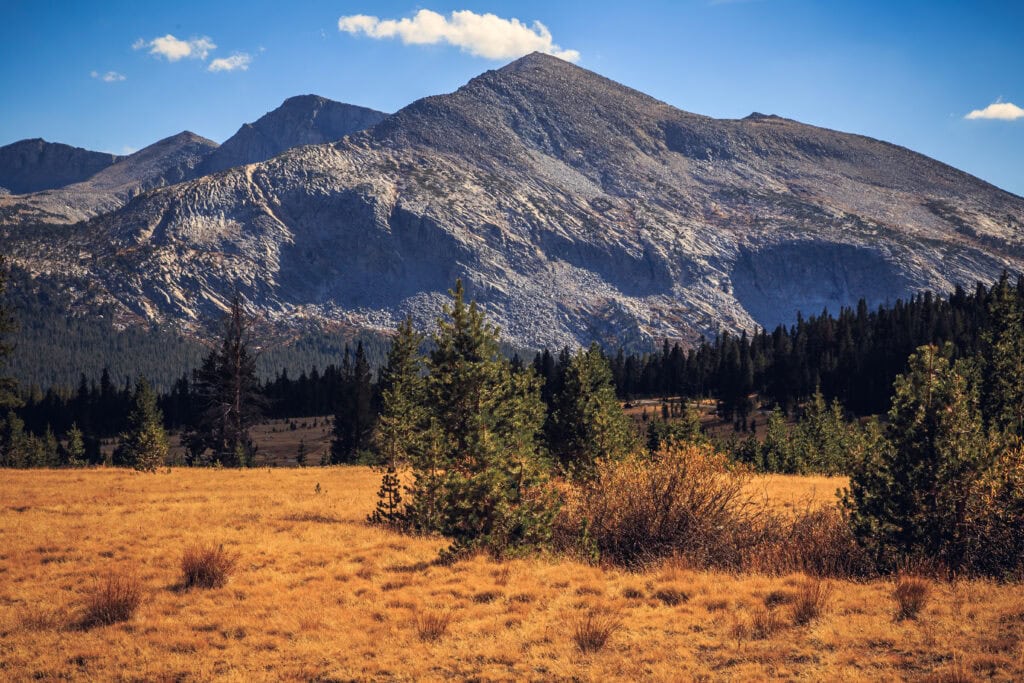
Though it’s 62 miles from the Tioga Gate to Yosemite Valley, a visit to the Yosemite High Country boasts its own lofty rewards. First on the list? Tuolumne Meadows. This open expanse of hue-shifting grasses is carved by the serpentine flow of the Tuolumne River and surrounded by distinctive Yosemite peaks such as Cathedral Peak (10,916 ft) and Unicorn Peak (10,781 ft). Dotting this sub-alpine tableau are a series of unique granite domes begging for a scramble.
15 miles from the Tioga Gate, Tenaya Lake is cradled by the geologic uprising that defines Yosemite National Park. The water here reflects the purest blue Sierra skies and offers the opportunity for a bracing swim, kayak or peaceful walk around its shores. There’s even a sandy beach on its eastern edge where intrepid sunbathers can catch some rays.
The trailhead for Yosemite’s second-highest peak — Mt. Dana — is located just a few hundred feet from the Tioga Gate. At 13,057 ft, Mt. Dana is a grinder of a walk up (3,100 ft in 3 miles) but the views from the top are otherworldly. This hike is often used as a “warm-up” for summiting Mt. Whitney, whose elevation of 14,505 ft makes it the tallest peak in the contiguous United States.
Nearby Lodging
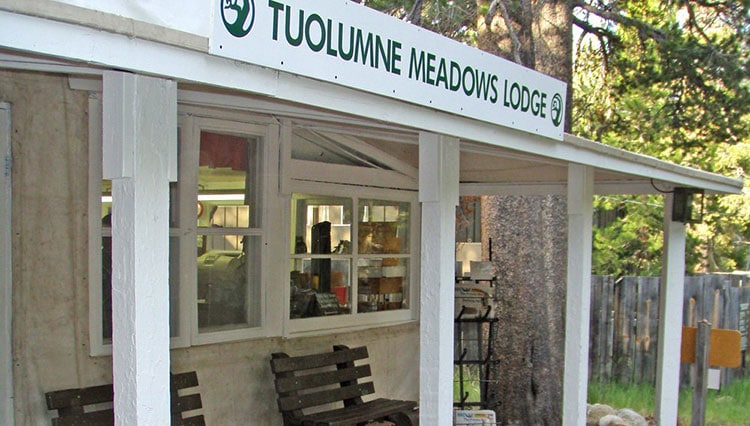
The tent cabins at Tuolumne Meadows Lodge are cozy with wood-burning stoves (firewood provided), and the riverside dining tent serves up three satisfying meals — an ideal relaxation spot to cap off your High Sierra sightseeing or that epic backpacking trip.
Located halfway between the Tioga Gate and Yosemite Valley, the White Wolf Lodge makes the most of the surrounding wildflowers and pine forest. It has 24 tent cabins and four traditional wood cabins. The rustic dining room offers breakfast and dinner in a peaceful setting before/after your amble through the woods to destinations such as Lukens Lake and Harden Lake.
Seasonal campgrounds (inaccessible when Tioga Road closes) along Tioga Road/Highway 120 include White Wolf (8,000 ft/74 sites); Yosemite Creek (7,700 ft/75 sites); Porcupine Flat (8,100 ft/52 sites) and Tuolumne Meadows (8,600 ft/304 sites).
Yosemite’s South Entrance
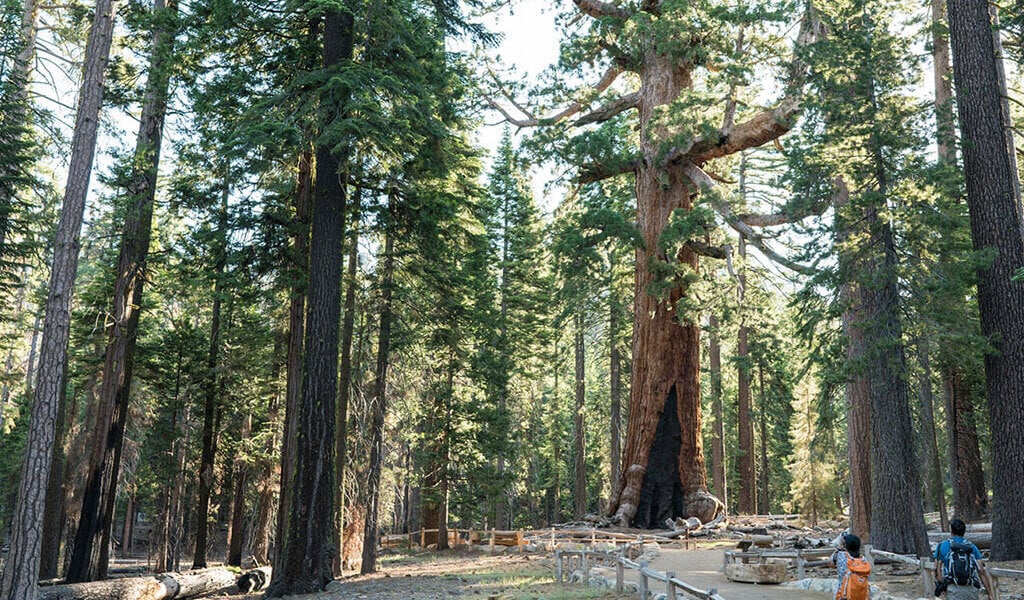
Located near Fish Camp, CA, along Highway 41, Yosemite’s South Entrance is nestled on the pine-studded Sierra slopes at an elevation of 5,000 ft. While many make the 26-mile beeline for Yosemite Valley, the bona fides of Southern Yosemite should not be overlooked. From train rides to horseback rides, and ancient trees to unsung waterfalls, there’s something to capture the imaginations of the most discerning travelers in this cornucopia of outdoor adventure.
Things To Do
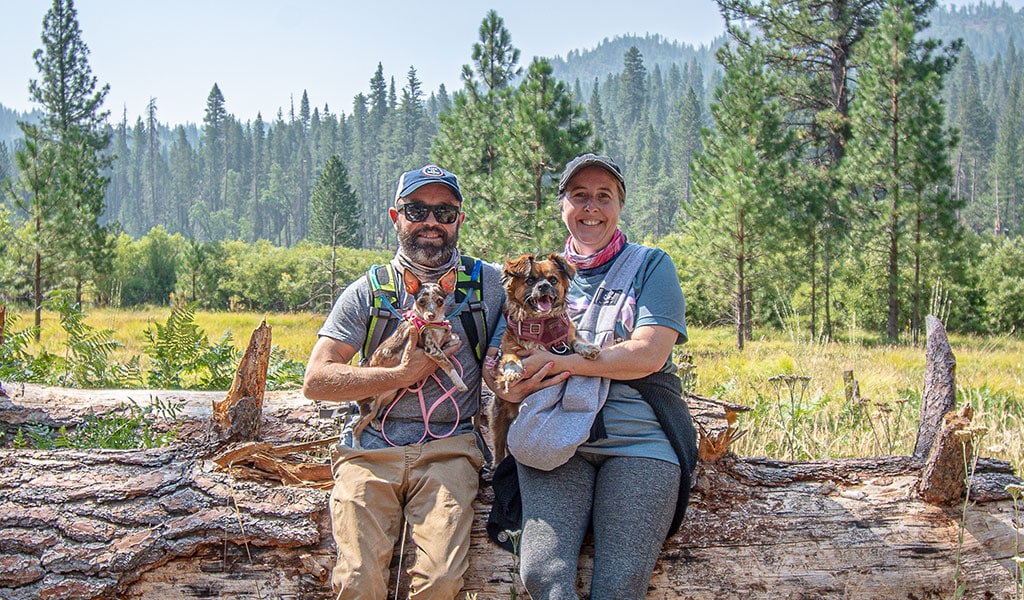
Just a few hundred yards inside the South Gate is the Mariposa Grove Welcome Plaza, where seasonal shuttles bring visitors to a gallery of arboreal titans — the Mariposa Grove of Giant Sequoias. The gnarled boughs and soaring crowns of these ancient trees give Tolkien’s Middle Earth a run for its money, and sport names like Grizzly Giant and Fallen Monarch. With botanical personalities this large, it’s always fun to have the kids give these trees their own nicknames!
The heart of Southern Yosemite is without a doubt the village of Wawona. Located five miles from the South Entrance, Wawona sits in a wooded bowl and offers a little bit of everything. The series of cascades that make up Chilnualna Falls rival those in Yosemite Valley, while the South Fork of the Merced River provides some of the best Yosemite Mariposa swimming in summer. If you need a museum fix, the Yosemite History Center is a unique collection of outdoor exhibits where you can read about such subjects as Yosemite’s first guardian, Galen Clark, and Asian American Pacific Islander contributions to the development of the Park.
Horseback riding is an unforgettable way to enjoy Yosemite’s natural beauty at a pace where can you really soak it all in. There are two stables near the South Entrance — Wawona Stables and Yosemite Trails Horseback Adventures — where visitors can saddle up for short rides or hit the trail for longer rides to Mariposa Grove.
Winter activities near the South Entrance are many, from the hoot & holler of sledding at Goat Meadow Trailhead and Snow Play Area to snowshoeing the Sierra National Forest that surrounds Fish Camp. The access road from the Welcome Plaza to Mariposa Grove closes in winter, making a snowshoe (or hike if the snowpack is low) through the giant trees a trek to remember.
Vintage trains have multi-generational appeal, and the Yosemite Mountain Sugar Pine Railroad gives youngins and grandparents something to whistle about. Located five miles from the South Entrance along Highway 41, tours such as the Moonlight Special and the Yosemite Jazz Train wind their way through the forest as tales of Yosemite’s past are revealed. Tours are seasonal and typically operate April through October.
Nearby Lodging
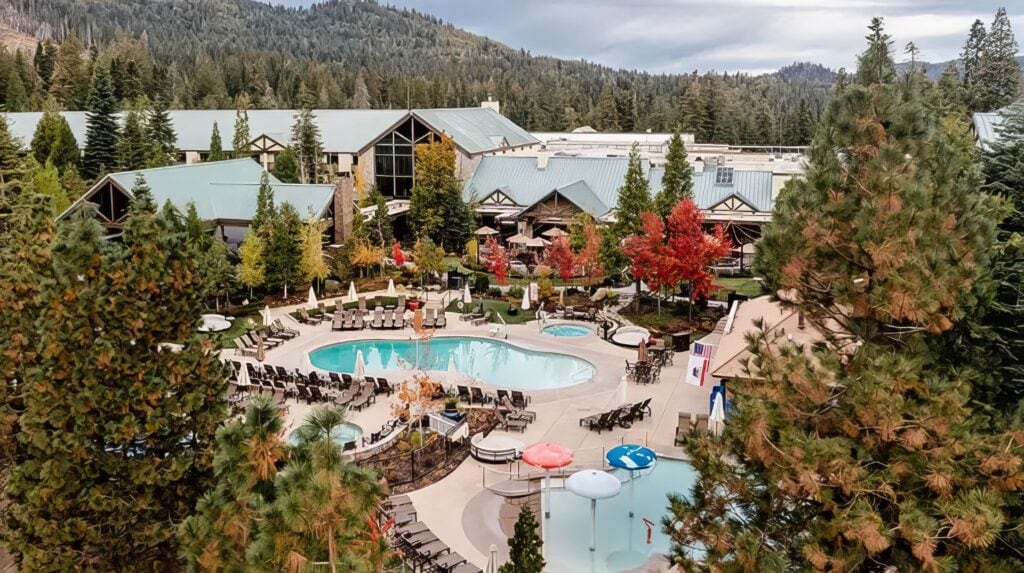
There are two campgrounds near the South Entrance that — due to their proximity next to neighboring communities — make roughing it a relative measure. The Wawona Campground (4,000 ft/97 sites) is located inside the Park along the South Fork of the Merced River, while the Summerdale Campground (4,900 ft/29 sites) is located just outside the Park in Fish Camp where campers enjoy the babbling of Big Creek.
On the hotel front, Tenaya at Yosemite can’t be beaten for its range of amenities. From indoor and outdoor swimming pools to on-site restaurants and its Ascent Spa, the Tenaya redefines Sierra luxe. If you want your own little chalet in the woods, their two-bedroom Explorer Cabins are perfect for families or small groups.
The Wawona Hotel exudes Old Yosemite and Victorian charm. This 104-room lodge is a National Historic Landmark where guests can hear evening piano music in the lounge or dig into their Summer Saturday BBQ on the well-manicured grounds.
Cabin rentals near Southern Yosemite are all about The Redwoods in Yosemite, which manages 125 rentals in the village of Wawona. Whether you’re coming up with family, friends, or even wedding parties, there’s a cabin to suit your comfort needs. There are also a few choice cabin rentals just outside the South Entrance in Fish Camp.
The Inside View
After all this chatter about gates and the great beyond, some might wonder why Yosemite needs gates at all. The simple answer? To protect and manage its stunning biodiversity. The flora, fauna and geology of the Park make for an unforgettable journey, yet the dense forests, curious black bears, and massive rocks are surprisingly vulnerable when it comes to human impact. Fortunately, there’s a way to help. Nature Rules! offers ideas on how visitors can make an actionable difference while enjoying their stay, and how to protect Yosemite National Park for generations to come.

